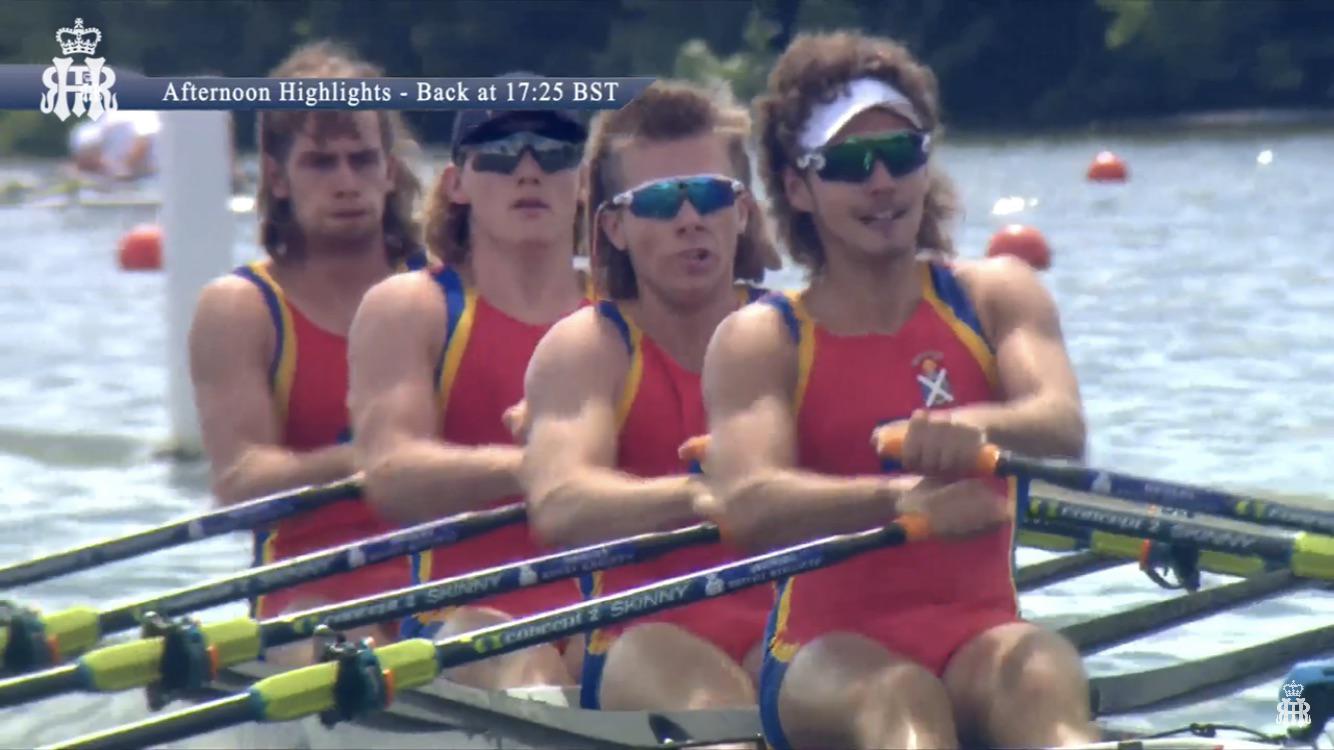Rowing Rebellion & Counter Culture

Rowing is often seen as a traditional sport with a history of strong discipline, and even stronger athletes, but there have always been people pushing at the fringes.
It is no surprise that there is a new form of rowing counter culture emerging with the resurgence of the mullet, bucket hats, heady EDM playlists, and gaudy eyewear. All of which could point to a form of rebellion against the very roots of the sport's origins and traditions.
Perhaps the discipline, commitment, and rigour of the training leads to athletes taking charge of the only thing they can - their appearance. When you take into account the strict traditional dress code and behaviour policy at many of the UK's top rowing schools and events (HRR anyone?), this fashion statement becomes more of a assertion of identity and individuality.
A case in point was the lambasting of bucket hats by 49 year-old James Cracknell during the Olympics.
Many younger rowers have bought into the idea, which seems to be breaking down the barriers to rowing, combating the inherent elitism associated with the sport. A case in point was the lambasting of bucket hats by 49 year-old James Cracknell during the Tokyo Olympics. The old guard indicating that many are still firmly attached to the traditionalism of the sport.
This rebellious movement, unsurprisingly, appears to have started in the schools and universities. Newcastle University Boat Club bucket hats appear to be prominent now at all events, and many clubs have followed blue star in designing their own. The Scotch College crews that came across to Henley Royal Regatta in 2019 sported mullets, and at BUCS Regatta you can now see an array of 'funky leggings' aiming to take top spot at a competition ran by BUCS themselves on Twitter.
This adds a sense of irony to the counter-culture. There is not even a rebellion in the traditional sense of drinking and partying...
When recruiting at university, many captains highlight the work hard, play hard approach that all clubs appear to take. However, the self-imposition of a ban on nights out, and early training sessions lead to a severe lack of opportunity to play hard. This adds a sense of irony to the counter-culture. There is not even a rebellion in the traditional sense of drinking and partying, yet if you were to place a rower next to a raver it would be a task to separate them. The brightly coloured tight clothing, bucket hats, mullets, the taste for EDM, and being the only ones awake and out and about at 5am are all common factors across both.
Music also plays a key part in the rebellion from the traditional view of rowing. The motivational rock and guitar solos of the past have been replaced with a wide range of dance music with a strong beat that many argue helps with rhythm on the ergo. Often athletes choose their own playlist that even the youngest of coaches would struggle to name more than 2 artists on, taking control of what they can. The choice of EDM is more prominent in schools and junior clubs where explicit songs are not allowed, so the best the athletes can choose are songs with no lyrics but a carefully timed piece where the drop is at a key time of their workout.
Calling a new pair of Oakleys or Pit Vipers 'free speed' or announcing that a bucket hat takes 5 seconds off your 2k split goes against this philosophy.
Even the wording that the athletes use to describe their fashion and culture seem to cut away at the traditional beliefs of rowing. Rowers of old highlight how tough the sport is and the commitment needed to do well, that every millisecond in a race is hard earned over months of training. Calling a new pair of Oakleys or Pit Vipers 'free speed' or announcing that a bucket hat takes 5 seconds off your 2k split goes against this philosophy, but it pokes light-hearted fun at these attitudes and gives athletes more freedom of expression, which only encourages them to continue and work harder.
The formal occasion that warrants a boat club blazer is far from when rubber ducky print leggings are appropriate.
It could be argued that brightly coloured clothing has always been a staple of rowing, as shown at Henley Royal Regatta every year. One of the most traditional events in the calendar is a rainbow of colour, it is hard to explain the difference between the conformity of a bright blazer but the rebellion of bright leggings. Perhaps the design of stripes and trim is more appealing to the traditional than the print and patterns on leggings, the formal occasion that warrants a boat club blazer is far from when rubber ducky print leggings are appropriate.
Youth and rebellion have always gone hand in hand, yet this time it appears to be taking a stronger hold. The Olympics saw bucket hats and bright Oakleys make their debut. The key to the garish rebellion must be appropriateness. The notion that regattas are places for prim and proper athletes to perform and present themselves in an 'acceptable' way is no longer the case for many. But perhaps we should be encouraging this modernisation?
At the end of the day you have to enjoy rowing, or you wouldn’t come back to those 5am starts. The athletes are proud to represent their club, but also to represent themselves, in an VIII where each person has a matching Lycra, you look for the hair, the hat, the sunglasses to set you apart from your crew. It is a way of expressing individuality, whilst also being part of a crew.
words syndicated from Junior Rowing News edited by Square Blades
photo from Reddit








